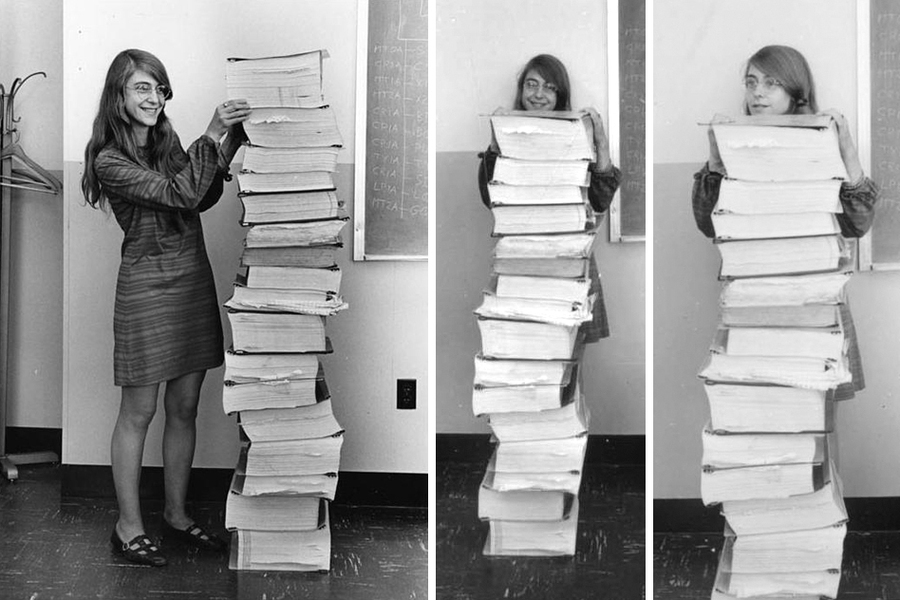This is Margaret Hamilton, NASA’s chief software engineer during the Apollo program, next to the code she led the development of, which took man to the Moon.

A curious fact is that a few minutes before Apollo 11 landed on the Moon, several alarms began to ring. What happened is that the Eagle’s radar became overloaded with the various information as the celestial body approached.
Discussing the cancellation of the landing, Hamilton took over the operation preventing the catastrophe, because knowing all the robust software architecture, she knew that the software would maintain the most important tasks and that the landing could continue.
According to Margaret: “The computer (or rather, the software) was smart enough to recognize that it was being asked to perform more tasks than it should. So it sent an alarm, which meant to tell the astronaut: ‘I am overwhelmed with more tasks of what I should be doing now and I will keep only the most important tasks.’ In fact, the computer was programmed to do more than recognize error conditions.”
Hamilton, at least for me, is in the same pantheon as computer giants like Alan Turing, Claude Shannon, Von Neumann, Berners-Lee and Linus Torvalds.
Remembering that during the Apollo program, several women helped with the complex mathematical calculations for the success of the mission, very well portrayed in the film “Hidden Figures (2016)”.
Women have always been very important in the history of technology and exact sciences, from Ada Lovelace, considered the first programmer to develop an algorithm, to Marie Curie who won 2 Nobel Prizes in different categories: Physics and Chemistry.
I hope this post encourages other women not to give up working with STEAM (science, technology, engineering, arts and mathematics), the world needs more women in these areas.
